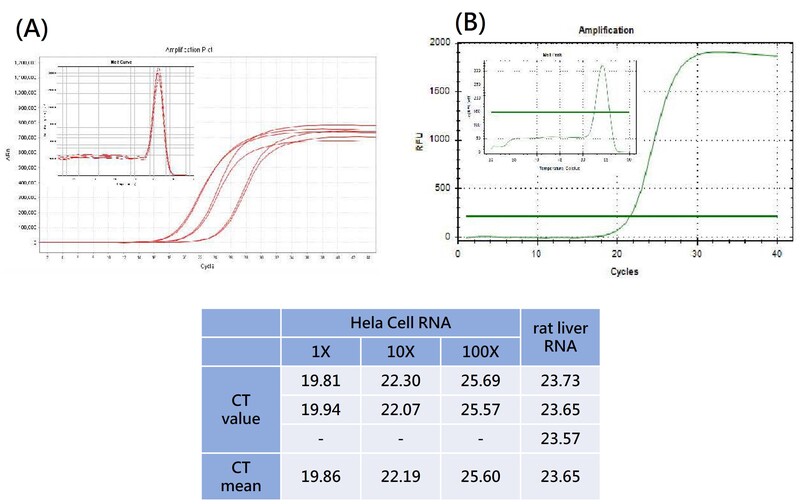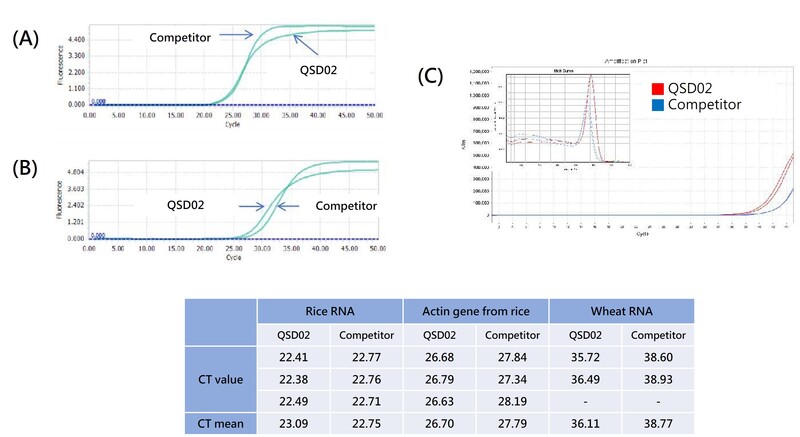產品介紹Products
-
This product is a new contamination-proof, dye-based real-time PCR master mix developed, based on PanGreen™ Universal MasterMix (Cat. QSD01-0100), by adding an optimized ratio of dUTP and UNG enzymes. It contains optimized concentrations of the Hotstart DNA polymerase, SYBR Green I, dNTPs, dUTP, UNG enzyme (Uracil DNA glycosylase), Mg2+, reaction buffer, and stabilizer. In the PCR reaction, dUTP is used instead of dTTP, and the T in the amplification product fragment is replaced by the U to form a PCR amplification product containing dU bases, and the highly active UNG enzyme can quickly degrade the U-containing DNA fragment in the reaction system, effectively eliminating the residual contamination of PCR products in the environment and greatly reducing the false positive caused by the amplification product contamination, thus ensuring the specificity and accuracy of the amplification. This product is a 2×contamination-proof, chemically modified real-time PCR premix reaction system, only requiring to add the template, primers, ROX Reference Dye (for calibrating the fluorescence signal error generated between wells and used according to different real-time PCR instruments) and water to make its working concentration 1× for carrying out the reaction. It has the advantages of rapidness and simplicity, high sensitivity, strong specificity, and good stability, which can minimize the human error, save PCR experimental operation time, and reduce the probability of contamination.

Figure 1. Detection Test of QSD02 on Different Animal Genes (A) Hela Cell RNA (B) Rat Liver RNA
Using QSD02 for reverse transcription on Hela Cell RNA and rat liver RNA templates, followed by qPCR, the amplification curve showed efficient and sensitive amplification of different genes.
Figure 2. Detection Testing of QSD02 on Various Plant Genes (A) Rice RNA (B) Rice RNA-Actin (C) Wheat RNA
After conducting reverse transcription reactions on rice RNA and wheat RNA templates using QSD02, resulting in cDNA, qPCR was employed for gene amplification. The amplification curves demonstrate its robust sensitivity in amplifying different genes.


